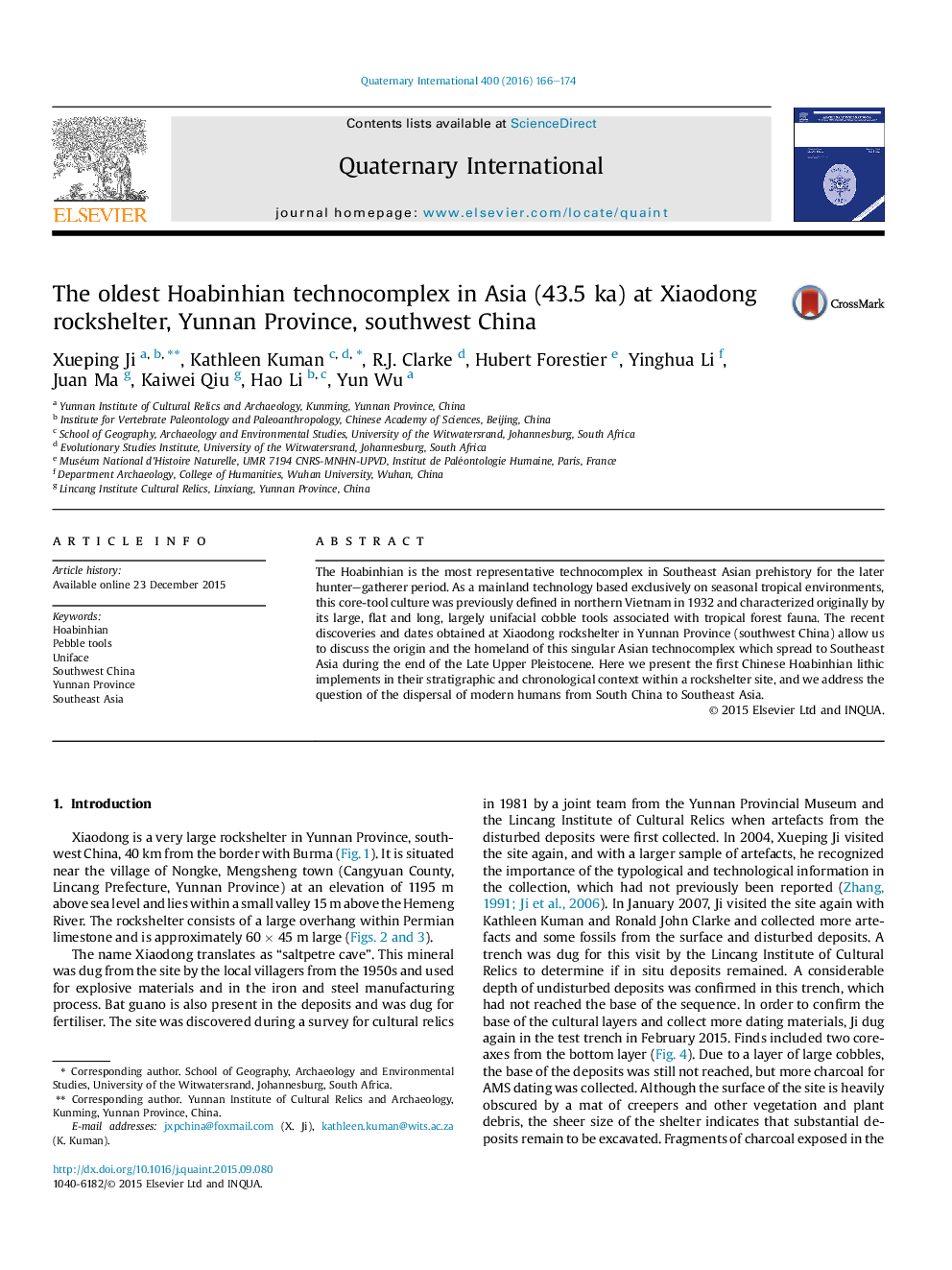| کد مقاله | کد نشریه | سال انتشار | مقاله انگلیسی | نسخه تمام متن |
|---|---|---|---|---|
| 1040226 | 1484098 | 2016 | 9 صفحه PDF | دانلود رایگان |
The Hoabinhian is the most representative technocomplex in Southeast Asian prehistory for the later hunter–gatherer period. As a mainland technology based exclusively on seasonal tropical environments, this core-tool culture was previously defined in northern Vietnam in 1932 and characterized originally by its large, flat and long, largely unifacial cobble tools associated with tropical forest fauna. The recent discoveries and dates obtained at Xiaodong rockshelter in Yunnan Province (southwest China) allow us to discuss the origin and the homeland of this singular Asian technocomplex which spread to Southeast Asia during the end of the Late Upper Pleistocene. Here we present the first Chinese Hoabinhian lithic implements in their stratigraphic and chronological context within a rockshelter site, and we address the question of the dispersal of modern humans from South China to Southeast Asia.
Journal: Quaternary International - Volume 400, 2 May 2016, Pages 166–174
